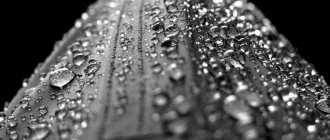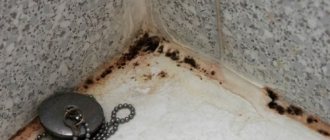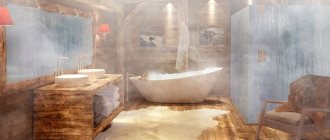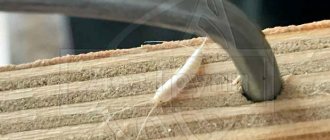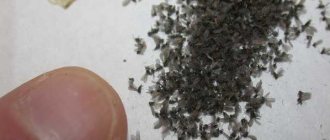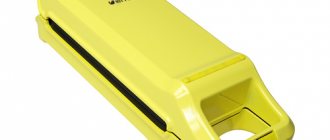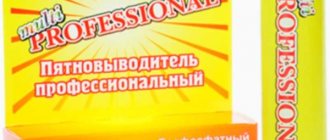Methods for removing moisture from pipes
The solution to the problem of foggy pipes depends on the cause of its occurrence, location, condition of the water supply and other factors. In most cases, you can cope with the problem yourself by adjusting ventilation or thermal insulation. However, sometimes radical measures are required - replacing the water supply, repairing plumbing fixtures, and faucets. It is better to entrust such work to a specialist.
Thermal insulation
Thermal insulation of cold water pipes will help get rid of condensation and prevent its formation in the future.
Heat insulating tubes
You can carry out insulation yourself using modern building materials, for example, energyflex, thermoflex, etc. Such materials are easy to install, safe, and affordable. In addition, they effectively cope with the task.
Let's consider the procedure for doing thermal insulation with your own hands:
- Dry the pipe thoroughly.
- Cut the insulation tube lengthwise.
- Place the energyflex on the water supply.
- Fill the seam and joints with glue or seal with tape to ensure complete tightness and insulation.
- Cover the insulation with spray paint so that it does not stand out from the overall design of the room.
Thermal insulation of pipes is a sure and effective way to avoid the formation of condensation and related problems
Plastic pipe
As an alternative to special insulation, use a regular plastic pipe of larger diameter. Make a longitudinal cut on it and carefully place it on the water pipe. Fill the free space with polyurethane foam. This method is simple, fast and cheap, but the service life of the structure is very limited.
putty
You can create thermal insulation using putty. Work order:
- Dry the surface, clean it from dust, debris and rust.
- Degrease the pipe with a solvent and then treat it with a special anti-corrosion agent.
- Apply the first layer of epoxy putty and wrap with fabric or twine.
- Apply several layers to achieve the desired insulating effect.
- After the putty has completely dried, treat the surface with coarse sandpaper and paint.
Special preparations
The simplest, fastest and most effective method of insulation is a special paint, which, after drying, turns into a polymer coating with thermal insulation properties. These products include: “Isollat”, “Corundum”, “Astratek”, “Teplomet”, “Bronya”, etc.
For thermal insulation, use special liquid compounds that are applied to pipes in several layers and create reliable protection
Application procedure:
- Wash the surface from dust and dirt, and then dry well.
- Sand the pipe with sandpaper to remove rust, and then coat it with a degreasing compound.
- Apply the selected product with a brush or spray in 3-5 layers. Be sure to dry the surface thoroughly before re-processing. Cover the top layer with a special protective varnish.
Ventilation
To solve the ventilation problem, follow a simple algorithm:
- Check the vent for debris, dust, and cobwebs. Remove all contamination and clean the well.
- Install a new grille or a special fan to create forced ventilation. This will solve the problem with condensation and high humidity.
- Leave the bathroom or toilet door open at night to create natural ventilation.
To normalize the humidity in the bathroom, install a forced-air fan in the vent
We recommend: What and how to clean a leather bag at home?
Other methods
Moisture absorbers will help remove condensation in the bathroom or toilet. The simple device is a plastic box containing an absorbent substance. It will help solve the problem of condensation, dampness, high humidity, and also reduce the risk of fungus.
Condensate traps will help deal with water droplets on the surface of the pipeline. Devices are classified into thermostatic, float and combined. They are installed at the outlet of the air heater or water heater, and the operating principle is based on the evaporation of excess moisture in the system.
If the cause of the problem is a faulty faucet or a leaking toilet cistern, then it is necessary to repair or replace the plumbing
In order to get rid of condensation on cold water pipes, it is necessary to determine the causes of the problem and eliminate it. As a rule, you can cope with the task yourself, but if there is a need to replace the pipeline, plumbing and other serious troubles, then you cannot do without the help of a specialist.
How to get rid of condensation
Before taking measures to combat condensation, it is necessary to conduct a large-scale check of communications and ventilation. If the cause of excess moisture is not eliminated, drops of water will eventually reappear on the surface of the pipes and sooner or later cause other problems.
Ventilation repair
Ventilation can be checked with a burning match.
First of all, it is necessary to inspect the ventilation system. Checking the quality of ventilation is quite simple - to do this, you need to leave the door to the room open at night. Dry pipes in the morning indicate poor air circulation in the bathroom. The second way is to bring a flame (lighter, match) or a sheet of paper to the grill. If they are drawn towards the ventilation duct, the system is in order, but otherwise we can talk about clogging or malfunctions.
The grille and other elements must be cleaned, debris, dust and cobwebs must be removed. It is best to organize forced ventilation in the bathroom, since conventional air circulation systems do not always cope with their task. Stores sell compact fans with different power levels, which are installed instead of a ventilation grille.
Exhaust fan prices
Exhaust fan
This is especially true for apartments and houses with additional heating devices and metal-plastic windows. If the temperature difference between the water in the pipeline and the air in the room is more than 17 degrees, condensation will appear constantly. To improve circulation, you can increase the clearance under the door and leave the bathroom door open as often as possible after hygiene procedures.
Repair of utilities
To eliminate condensation, you need to eliminate pipe leaks
If the ventilation is in order, it is necessary to inspect the entire piping in the bathroom, toilet and kitchen. Typically, leaks and problems are visible to the naked eye. In rooms where pipes are laid in the walls, it will be more difficult to identify the problem. To do this, you will have to partially disassemble the box covering the pipeline, or call professionals who will determine the malfunction using special instruments.
All leaks must be eliminated, and most often faults are found in the mixers. A thin stream that flows from the bottom of the faucet often causes condensation. To eliminate the leak, you need to replace the gasket or cartridge, and, if necessary, buy a new faucet. Particular attention should be paid to the tank - if the sound of flowing water is constantly heard in the toilet, it means that the tank is not filled to the full and is constantly updated with cold water.
If condensation appears, you need to check the serviceability of the tank
A good solution to the problem of condensation that appears due to water in the tank can be a double design. There is an additional plastic container inside it where liquid is collected. It does not come into contact with the walls of the tank, so “fogging” of the pipes is excluded. The disadvantages are that such devices are expensive and are most often sold complete with a toilet.
Video - An easy way to remove condensation from a tank
Sometimes the matter is not limited to replacing small parts of the water supply system - you have to change individual sections of pipes. In the case of plastic pipes, you can do this yourself by first turning off the main water supply tap. Metal structures can only be changed by plumbing workers with special equipment.
If the ventilation and communications are in order, you need to ask the neighbors above to inspect the bathroom - perhaps they have a leak.
Attention! There is no point in repairing ventilation systems and plumbing equipment on your own without special skills. It is better to contact the management company - its employees will eliminate all malfunctions, blockages and breakdowns.
Installation of thermal insulation
You can lay the thermal insulation of pipes yourself
If all problems with ventilation and engineering equipment are eliminated, but condensation still appears, the reason lies in the temperature difference. In this case, you will need thermal insulation of cold water pipes, which is done using special materials or protective chemicals.
The easiest option is to purchase gaskets made of special foam material. It is sold in the form of soft hollow rollers with a cut and is used very simply - put on the pipe like a cover, and then glued together. The main thing is to choose the correct diameter of the overlays, since too large ones will not give the desired effect, and too small ones will not be able to be glued together.
Popular materials also include mineral wool (produced in blocks or rolls depending on the diameter of the pipes) and polyurethane foam. They demonstrate excellent thermal insulation characteristics, but have particularities of use and installation.
Prices for thermal insulation for pipes
Thermal insulation for pipes
Liquid thermal insulation
Liquid thermal insulation is easy to use and does not require special skills
A simple solution to combat condensation, which often has a positive effect, is to coat the pipes with drying oil or oil paint, as well as a protective primer. It is diluted with drying oil or epoxy varnishes, applied to the surface of the pipeline and, after drying, painted with conventional paints. It is recommended to seal cracks in the walls and floors with carbonate , a paste-like mass. The carbolate is applied to the work surface, left for 24 hours, after which it is sanded and painted over with oil paint.
Video - Practical application of liquid thermal insulation
The second option is to coat the surface of the pipes with a special chemical composition. They have different characteristics, but perform the same task. To choose the right product, you need to pay attention to the following parameters:
- price – high-quality thermal insulation cannot be too cheap;
- the weight of the paint is no more than 7-7.5 kg per 10 liters, and mixtures that are too heavy probably contain foreign mixtures that reduce the effect of use;
- delamination of the composition , which is noticeable in the light, should be small;
- The color of real liquid thermal insulation should be white, and there should also be a slight smell of ammonia;
- Reviews of products from certain manufacturers on the Internet can say a lot about the quality of the products.
Table 1. The most popular thermal insulation compounds for pipes.
| Product brand | Features and Specifications |
| Akterm Metal | Water-dispersion paint, including a group of liquid chemical compounds for thermal insulation of the material. Safe, suitable for thermal insulation work inside residential buildings, but used exclusively on metal surfaces. Has high vapor permeability and is resistant to moisture |
| Astratek | It is sold in the form of a liquid substance, which in consistency resembles mastic, and is made on the basis of polymers. The composition is non-flammable, can withstand temperatures up to +260 degrees, prevents corrosion processes and protects pipes from condensation. Does not contain toxic compounds, therefore can be used to cover pipes in bathrooms |
| Teplomet | A latex-based liquid material, which consists of 80-90% microgranules, and the spaces between them are filled with titanium dioxide particles. It is easy to apply, does not require dismantling the old coating and is capable of performing protective functions for at least 20 years. Resistant to mechanical stress and humidity, protects the pipeline not only from condensation, but also from mold and mildew |
| Corundum | A water-based substance that contains microspheres up to 0.5 in size and additives that increase the efficiency of use of the material. It is easy to apply, adheres well to the surface and lasts a long time. The product protects the metal from corrosion without increasing the load on the elements, and prevents the proliferation of pathogenic organisms and fungal spores. Does not release toxic or poisonous compounds |
Liquid thermal insulation requires proper storage and application
Prices for liquid thermal insulation
Liquid thermal insulation
The only drawback of liquid thermal insulation mixtures is that they are sensitive to storage conditions. A composition that has been stored incorrectly may lose its characteristics, so you need to buy products in trusted stores and use them as quickly as possible. It is also important to apply the product correctly to insulate the pipes and protect them from condensation.
- clean work surfaces from rust and dirt using special chemicals.
- Treat the pipes with a primer for better adhesion of the thermal insulation to the material. Features of application and drying time of primer compositions are indicated on the packaging.
- Apply a heat-insulating mixture to the pipes. This process usually does not cause any difficulties - the products are applied like any paint using a roller, brush or spray. You need to apply from 3 to 5 layers, and each of them requires preliminary drying.
- to apply a special fixer on top which will protect the coating and give the pipes an aesthetic appearance.
To preserve the color scheme of the bathroom interior, you can add pigment to some heat-insulating mixtures or apply regular paint over the mixture layer.
Condensation threats
Important! When purchasing materials and mixtures for thermal insulation of a pipeline, it is important to pay attention to the choice of products - they must fully correspond to the material, diameter and other characteristics of the pipes. If you make a mistake in even one parameter, their use will not give the desired result.
Thermal insulation with epoxy and fabric
Insulation insulation will protect not only from condensation, but also from other problems
It is a difficult and labor-intensive method of thermal insulation of pipes, but experienced plumbers consider it the most durable and effective. It will require the following materials:
- epoxy putty;
- strips of cotton fabric 5-6 cm wide;
- strong thread;
- acetone;
- rust remover;
- sanding paper.
The amount of materials is calculated depending on the thickness of the pipes and the size of the area that needs to be processed.
Table 2. Thermal insulation of pipes using fabric and epoxy putty - step-by-step instructions.
| Photo | Step, description |
| Step 1. Sand the pipe, degrease with acetone and treat with a rust converter, let dry well | |
| Step 2. Apply a layer of epoxy to the surface, then quickly wrap the structure with fabric and secure with strong thread | |
| Step 3. Similarly, make another 2-3 insulating layers of fabric, apply a layer of putty on top | |
| Step 4. Wait for the thermal insulation to dry completely, then sand the pipes and coat them with paint. |
Do not forget that thermal insulation in any form can only be used for complete pipes without leaks or cracks. If the pipeline is leaking, materials and mixtures placed on top will only aggravate the problem.
Advice! If, in the absence of leaks or other problems, condensation constantly accumulates on metal pipes in the bathroom or toilet, you can resort to a labor-intensive and expensive, but effective solution. It involves installing polypropylene pipes instead of metal ones - a heat-insulating layer on their surface is usually formed at the production stage.
Causes
Condensation is a fairly common occurrence. It mainly forms on cold water pipes. The reasons for this are the presence of high humidity in the room air and the difference between the air temperature and the temperature of the pipeline.
This phenomenon occurs in the same way as dew on the leaves of grass in the morning. Under certain conditions (air humidity, temperature and atmospheric pressure), a so-called “dew point” is formed, upon reaching which the water vapor present in the air settles on the surface of surrounding objects.
Steam also settles on the surface of water pipes, which seem to “sweat”, becoming covered with drops. For this effect to occur, the surface temperature must be lower than the ambient temperature. This is why this happens to cold water pipes in the bathroom and toilet, which are cooled by the passage of a cold flow through them with a temperature lower than the air temperature in the room.
In order to determine the true cause of condensation, it is necessary to determine exactly at what moment it appears, since cooling is associated with the direct movement of water flow.
If water does not flow through the pipe, then the pipe, together with the water in it, heats up to ambient temperature. Under such conditions, condensation cannot form.
Therefore, when water drops are detected on a pipe, you need to accurately determine the location of the source of water movement. This could be a toilet cistern through which water flows unnoticed due to lost or torn gaskets. This movement of water through the pipe is quite sufficient to cool it and form condensate. The source may also be a poor-quality gasket on one of the taps through which the water flows.
In addition, the reason for the formation of water drops may also be found in neighbors who live higher on any of the floors if, for example, their drain tank is leaking. In this case, condensation can form on the water risers passing through the apartments from bottom to top. At the same time, the constant movement of water and, accordingly, cooling of the pipe occurs due to the fault of these leaks. When determining such a cause and wanting to eliminate it, it is necessary to inform the residents who are located above about this.
It should also be taken into account that the formation of condensation on pipes is facilitated by insufficient ventilation or its absence, especially in rooms with high humidity. For example, this can happen in the bathroom, where hot water produces steam, which settles on the pipes in the form of droplets.
Why are droplets on the surface of pipes dangerous?
Condensation on cold water pipes cannot be considered a minor nuisance. If no measures are taken, the situation will only get worse over time. Metal pipes will begin to collapse. An increased level of moisture will create ideal conditions for the development of mold, and in advanced cases it is extremely difficult to get rid of this serious problem.
The consequences for a family living in close proximity to such a threat are difficult to predict. The most common problems are allergic reactions, the worst option is serious, sometimes incurable, diseases. Therefore, it is better to prevent the colonization of fungal colonies in time. At the first signs of regular condensation, owners need to find the cause and try to quickly correct the situation.
Moisture that appears on metal pipes provokes corrosion of the material, due to which the failure period of system elements is approaching. Constant contact with flowing moisture does not have the best effect on wall and floor coverings. They begin to crack, fall behind, and mold may appear in the seams, so soon the owners will have to deal with major repairs again.
Danger of condensation
A high-quality and hermetically installed double-glazed window guarantees comfortable warmth in an apartment or private house. However, such a window blocks the access of fresh air to the room and disrupts the microclimate inside it that is favorable for humans. And condensation on plastic windows just indicates a violation of the microclimate in the home. High humidity actively contributes to the proliferation of harmful bacteria in the house, the formation of fungus and mold.
We recommend: How to smooth out paper
Optimal conditions, according to SNIP 2.04.05-91, are:
- temperature 20-22°C;
- and moisture content 30-45%!
The risk of windows fogging then becomes minimal. And since the double-glazed windows still begin to “sweat,” this means that there is a violation of the favorable climate in the room.
Creating adequate ventilation
High humidity, and with it condensation on pipes, can be eliminated by establishing good ventilation in the bathroom and toilet.
What to do:
- periodically leave the bathroom door ajar to allow fresh air to flow in;
- enlarge the opening at the bottom of the door or make a ventilation grill in it;
- place a powerful fan in the forced ventilation opening;
- in case of problems with the common building ventilation riser, contact the housing office;
- include in the future renovation project the installation of windows with micro-ventilation and the expansion of the ventilation hole.
Reasons for the formation of condensation on pipes
Condensation can most often be seen in the bathroom or toilet. It appears due to the temperature difference between the room air and the surface of the pipe. When evaporated moisture is not removed from the room through ventilation in the form of steam, it cools and turns into water droplets. They are the condensate on the pipes.
Condensation is especially noticeable in the warm season, when the room temperature is maintained at a fairly high temperature.
We can conclude about the main reasons for the appearance of condensation on pipes:
- increased humidity in the room;
- poor ventilation and air circulation;
- lack of thermal insulation of pipes.
What are the dangers of constant condensation?
Condensation not only spoils the appearance of the bathroom or toilet. It contributes to faster wear of pipes. Plastic pipes can become moldy due to condensation, and metal pipes can collapse.
Due to condensation, rust may appear on the pipe threads, which reduces its tightness
Large amounts of condensation are especially dangerous. Moisture will not only accumulate on the pipe, but also drip from it onto the floor, which, of course, does not contribute to its long service life. In the most advanced cases, dripping condensation seeps to the neighbors below, who are unlikely to be happy with the resulting stain on the ceiling.
What are the dangers of a “sweating” pipe?
The condensation that appears on the pipes is not just droplets of water. First of all, it is an aggressive environment for metal pipelines. In conditions of high humidity, the material corrodes and quickly fails.
In conditions of continuous humidification, a damp smell appears in the room. In addition, in places of high humidity, excellent conditions are created for the development of various bacteria, including mold and all kinds of fungi. Constant human contact with this kind of “neighbors” is extremely undesirable and can cause disruptions in the functioning of the body.
For metal pipes, constant humidity is fraught with rust.
If the appearance of condensation or its abundance is not detected in a timely manner, puddles may form on the floor. If they are not eliminated in time, then the time for repair work to replace the flooring in the bathroom can be delayed.
Causes of condensation
Condensation may appear in the bathroom and toilet for the following reasons:
- Temperature difference between the room and the pipeline, which is especially noticeable in summer. Moreover, the problem is equally relevant for apartments and private houses.
- Poor ventilation, high air humidity.
- Problems with the faucet, malfunction of the toilet tank, which leads to constant leakage of water. In this case, repairs are required, which you can do yourself or entrust to a plumber.
- Improper organization of plumbing in the bathroom, close proximity of pipes and poor insulation.
- Neighbors have problems with their bathroom: leaks, faulty plumbing, etc.
A common cause of condensation is a malfunction of the toilet tank, due to which the water in it is constantly cold, which, in contrast to the warm air, contributes to fogging of the pipes
Quite often the problem is accompanied by fogging of the plumbing, so to find out how to get rid of condensation on the toilet cistern, we recommend reading our other article.
You can check the ventilation in the toilet or bathroom using a lit match. Just hold it to the hole and follow the flame. If it is directed towards the hood or goes out, it means the ventilation is working well.
Creating thermal insulation with your own hands
Making insulation for a cold water riser yourself is not that difficult. For this we need:
- sandpaper;
- rust converter (eg phosphoric acid);
Rust remover
- strong thread;
- cotton fabric (you can use old things);
- epoxy putty;
- putty knife.
An old sheet or duvet cover works well as insulation. You can use various bandages and other materials. Large and wide canvases are best cut into strips up to 10 cm wide and rolled into rolls.
Epoxy putty
Next, you need to clean the pipe itself and degrease the surface. A regular acetone-based nail polish remover will do the job. The next step is to treat the riser with a rust converting agent.
After careful preparation, insulation can begin. Apply a layer of putty and, without waiting for it to dry, wrap the pipe tightly with a cloth from bottom to top. Wind the fabric so that each turn overlaps the previous one and is saturated with putty. Finally, secure the bandage tightly with thread.
If you notice that condensation often appears on the pipes in the bathroom, do not delay in solving this problem.
Once dry, apply several more layers of insulation. The final step will be to coat the pipe with putty. Once the homemade casing is completely dry and hardened, it can be sanded and painted to match the wall.
Don't leave the problem of high humidity unattended. Not only the appearance of your bathroom, but also the integrity of the cold water supply pipes depends on this.
How to get rid of condensation in the bathroom: video
Condensate on pipes: photo
Consequences
One of the consequences of condensation is rust. The formation of rusty stains not only spoils the appearance of metal parts, but also destroys them. Condensation often occurs on risers that pass vertically through the apartment. In this case, the paintwork may peel off.
Drops fall on the floor, forming small puddles that destroy the floor covering. Moisture can also damage the furniture in the room. Also, due to the constant accumulation of moisture on surfaces, mold and mildew can occur, which have a negative impact on human health. The appearance of mold in hard-to-reach places in plumbing fixtures is especially unpleasant.
The occurrence of condensation in closed places (where it is not visible) is especially dangerous. At the same time, moisture can get onto the electrical wiring, oxidizing the contacts. Water is also an excellent conductor. Leaks on the walls can conduct electric current, which is a very dangerous factor.
Thermal insulation
To minimize the impact of temperature differences in cold water pipes and room temperature, you need to insulate them. Excellent thermal insulation, high fire safety, ease of installation, tightness and low price of modern insulation will allow you to appreciate this solution.
The pipe must be covered in a special insulation material - cases made of foamed polyethylene (energoflex). It is a flexible material whose closed pores give it excellent thermal insulation properties.
Your actions:
- dry the pipe;
- cut the energyflex tube lengthwise;
- wrap the pipe with cold water;
- fasten the longitudinal seam of the insulation with glue or clamps;
- glue the ends of the energy flex together;
- If desired, you can paint the insulation with spray paint of the desired color.
Important! After applying glue to the energyflex tubes, you need to wait 5 minutes and only then glue them together.
As an option, Isollat, a universal material for pipe insulation, the so-called thermos paint, will help prevent condensation from appearing. This is a water-based suspension, which, after drying, turns into a polymer coating with good thermal insulation properties.
How to paint with Isollat:
- clean and degrease the surface of the pipes;
- apply paint in one layer with a brush;
- To give a glossy shine, the top can be coated with silicone varnish type KO 85.
Insulation of water pipes
Insulation can be done using an insulating pipe with a cut for ease of installation on the pipeline. Before installing the product, thoroughly clean and dry the piping. This method is the simplest and fastest. Its essence is simple: eliminating sudden temperature changes.
We recommend: Why the washing machine does not fill with water: causes and troubleshooting
If you are not looking for the easy way out, you can carry out full thermal insulation, which will also help eliminate condensation. For work you will need: sanding paper, strips of cloth 5-6 cm wide, rust converter, spatula, strong thread, acetone and epoxy putty. Work algorithm:
- The water pipe is plastered to increase adhesion strength;
- Using a cloth soaked in acetone, the pipeline is degreased;
- The product is treated with a rust converter;
- We wait for some time for the pipeline to dry. Then we apply thick epoxy putty to it;
- The water pipe is quickly wrapped in cloth, the edge of which is fixed with a strong thread;
- Similarly, apply 2-3 layers of fabric insulation;
- Epoxy putty is applied again;
- We wait until all the layers are dry. Then the pipeline is sanded and painted.
Additional ways to eliminate condensation
- Corrugations with a large diameter are purchased. The cavity between it and the pipeline is filled with polyurethane foam. The method is optimal for working with a riser;
- In specialized stores you can look for the Grafotherm composition. Its operating principle is simple: the product forms a thin but durable film that prevents condensation;
- If the cause of this problem is a slight water leak, you will need to replace or repair the faucets or the cistern inlet valve;
- If droplets of water appear on the riser, it is possible that the problem is not your fault, but the neighbors above. Accordingly, this is an excellent reason to pay them a friendly visit;
- The easiest way to eliminate condensation is to wrap water pipes with cloth or bandages. The method is only good for temporarily getting rid of the problem;
- Be sure to check the quality of ventilation in the bathroom and toilet. This factor also affects the formation of water droplets. If necessary, it is recommended to install an exhaust fan;
- Insulation from water pipes transporting cold water is carried out using special tubes made of various materials (foamed polyethylene, energy flex, and so on). It is enough to cut these products along the entire length, install them on top of the pipeline, securing them with metallized permanent tape. This measure allows you to eliminate temperature changes, temperature changes at which surfaces become foggy, and then drops of water begin to flow from them onto the floor.
If you've already tried everything, but the condensation doesn't seem to go away, the problem may be more serious. Perhaps the difficulties lie in poor waterproofing of the walls or floor. Cosmetic repairs are not enough here. It is necessary to determine which factor leads to an increase in humidity. This could be evaporation from the basement, a damp foundation, or unprofessional thermal insulation of the walls. Only after eliminating the source of the problem can you begin to work on high-quality insulation of walls and ceilings.
We get rid of the problem with the help of special devices
If the cause of the “sweating” pipes has been determined to be a temperature difference, then the first need will be to insulate the cold water riser. A variety of materials can serve as insulation; they all differ from each other in price, appearance and degree of insulation.
The simplest option is to purchase linings made of foamed thermal insulation material . They look like soft pipes with a cut along them. The insulation is put on the pipe like a cover and glued together. It is very important not to make a mistake with the size. If you purchase an overlay with a larger diameter, there will be no effect, just like with a smaller size (you cannot glue this one).
Insulating lining for cold water pipes
A more expensive, but very effective method is to apply heat-insulating paint. To insulate a cold water riser, it is necessary to apply 4-6 layers of the substance, allowing each layer to dry completely. When working with paint, it is important to ensure forced ventilation of the room. To do this, you can use a regular fan.
Thermal insulating paint
For greater effect, you can combine the two previous methods. Make sure the coating is completely dry before placing the insulation cover over the painted pipe. It is also possible to apply a layer of paint on top of the heat-insulating nozzle, but only after it is well fixed.
Another means of insulation is a larger plastic pipe placed over the main one. The resulting air space is filled with polyurethane foam.
Important! When carrying out any work on pipe insulation, it is necessary to completely dry it in advance from any drops that have formed.
Each of these methods is very effective, but if you did not count on the purchase of expensive coatings, you are better off using the old proven method - creating thermal insulation yourself.
